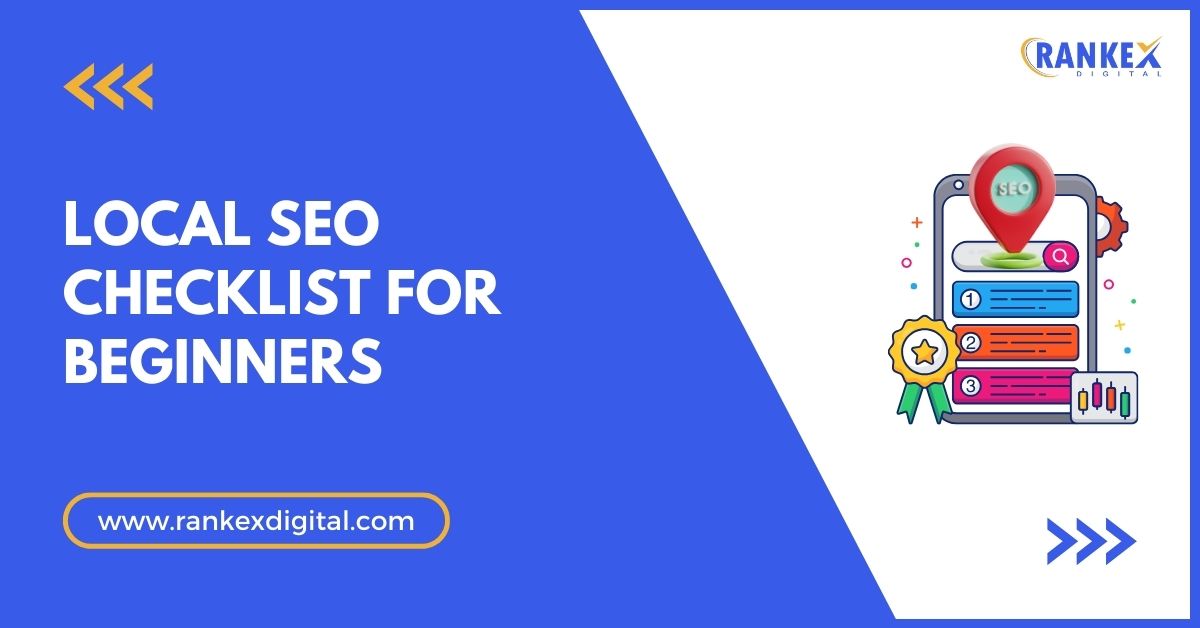Social media marketing helps you connect with people, promote your products, and grow your brand online.
In 2025, almost everyone uses social media—from teens to business owners. If you’re not using it to market your business, you’re missing out on attention, traffic, and sales.
This guide is for beginners. No fancy words. No expert experience needed. Just clear, actionable tips to get started.
Table of Contents
- 1 What Is Social Media Marketing?
- 2 Popular Social Media Platforms in 2025
- 3 How Social Media Marketing Helps You
- 4 Key Components of a Social Media Marketing Strategy
- 5 Types of Content You Can Share
- 6 Free and Paid Tools to Help You Start
- 7 Common Social Media Marketing Mistakes to Avoid
- 8 Simple Social Media Tips for Beginners
- 9 Final Thoughts
- 10 Frequently Asked Questions
What Is Social Media Marketing?
Social media marketing means using platforms like Facebook, Instagram, TikTok, and others to promote your business online.
It’s not about random posting. It’s about showing up with purpose.
Here’s what it includes:
-
Creating and sharing content – Photos, videos, reels, stories, or blog links
-
Engaging with your audience – Replying to comments, answering DMs, asking questions
-
Running paid ads – Boosting posts or creating ad campaigns to reach new people
-
Tracking results – Checking what’s working so you can do more of it
You don’t need to be a designer or ad expert to do this. Start simple. Post useful or interesting content and interact with your followers.
There are two main types of marketing on social media:
-
Organic – Free posts and engagement
-
Paid – Ads that cost money to boost your reach
Both can work. Start with organic. Add paid later if you want to grow faster.
Popular Social Media Platforms in 2025
Each social media platform has its own strengths. The right one depends on what you sell and who you’re trying to reach.
Here’s a breakdown:
Best for local businesses, events, and community groups.
You can create a business page, post updates, and run low-cost ads.
Perfect for anything visual—fashion, beauty, travel, food, and lifestyle.
Use posts, reels, and stories to show off your brand.
YouTube
Ideal for long-form video content like tutorials, reviews, or vlogs.
Builds trust and authority over time.
TikTok
Good for quick, engaging videos.
Works well for creators, small businesses, and product demos.
Designed for professionals and B2B marketing.
Use it if you offer services or sell to other businesses.
Great for DIY, crafts, design, and product inspiration.
Best for traffic generation—people use it to plan purchases.
X (Twitter)
Used for updates, news, and real-time conversations.
It works for public figures, writers, tech companies, and journalists.
Tip: Don’t try to be everywhere. Start with one or two platforms where your audience already spends time. Focus there before expanding.
How Social Media Marketing Helps You
It’s more than likes and shares. Social media is a tool to grow your business.
Here’s how it helps:
1. Boosts Brand Visibility
When you post regularly, more people see your name, logo, and content.
Over time, you become familiar—even trusted.
2. Builds Real Connections
It’s a place to talk with your audience, not just talk at them.
Reply to comments, ask questions, and join conversations.
3. Drives Website or Store Traffic
Use posts to guide people to your website, blog, or shop.
The right call-to-action (CTA) can send people directly to your offers.
4. Generates Leads and Sales
You can promote products, launch offers, or direct people to sign up for services.
Paid ads can increase reach and bring in sales quickly.
5. Collects Feedback to Improve
People will tell you what they like or dislike.
Watch the comments, reviews, and reactions. Use that info to improve your content or product.
Key Components of a Social Media Marketing Strategy
Don’t wing it. If you want real results, build a simple plan around these parts:
1. Set Goals
What are you trying to do?
Grow your followers? Get more traffic? Sell a product?
Be clear so you can measure your progress.
2. Know Your Audience
Who are you talking to?
Age, interests, problems, habits, locations—know the details.
It shapes your content and your tone.
3. Pick the Right Platforms
Don’t copy others. Choose platforms that make sense for your audience and what you can create.
4. Create a Content Plan
Plan posts ahead of time. Use themes, topics, or series.
Mix different formats: images, videos, reels, stories, polls, links.
5. Engage Often
Reply to comments. Respond to DMs. React to others’ content.
Social media is a two-way street.
6. Track What Works
Use analytics. Check which posts get likes, clicks, saves, or shares.
Then double down on what works.
Without a strategy, you’re just guessing. With one, you’re building something that grows over time.
Types of Content You Can Share
There’s no single formula for success on social media. What works for one brand may not work for another. The key is to keep your content fresh and varied so your audience stays interested.
Try mixing these content types:
Product Photos
Showcase your products clearly.
Use clean, high-quality images. Highlight features, colors, and benefits. Tag your product if the platform allows it.
Behind-the-Scenes Shots
Share what happens behind closed doors.
Let people see your workspace, packaging process, team, or even mistakes. It builds trust and shows the human side of your brand.
Short Videos and Reels
Use quick videos to catch attention.
Create how-tos, tips, product demos, or relatable clips. Keep it short and engaging. Add captions to reach viewers who watch without sound.
Tutorials and How-To Guides
Teach your audience something they care about.
Explain how to use your product or share simple tips related to your niche. People follow accounts that solve their problems.
Stories and Live Sessions
Use Stories for daily updates or limited-time offers.
Go live to answer questions, launch products, or connect with your audience in real time. These formats build stronger engagement.
Polls, Quizzes, and Q&A
Ask questions to involve your followers.
Use Instagram Stories, Facebook polls, or TikTok comments to collect answers. It’s quick feedback and makes your followers feel heard.
Customer Reviews or Testimonials
Share screenshots, videos, or quotes from happy customers.
Social proof builds credibility. Let real people promote your product through their own words.
Blog Links or Helpful Tips
Share links to your blog or website content.
Offer bite-sized tips that solve small problems or teach something useful. It positions you as a trusted source.
How to Know What’s Working?
Watch your analytics. Look at:
Likes and shares
Saves or clicks
Comments and responses
Do more of what works. Drop what doesn’t. Keep testing new formats until you find your rhythm.
Free and Paid Tools to Help You Start
You don’t need a big team or expensive software to run a solid social media presence. These tools are easy to use, even for beginners, and help save time while improving quality.
Canva
Create graphics, story slides, thumbnails, and posts in minutes. Use templates to design like a pro—no design skills needed.
Buffer or Hootsuite
Plan and schedule your posts ahead of time. Post across multiple platforms from one dashboard. Great for consistency.
Meta Business Suite
Manage both Facebook and Instagram pages. Schedule content, respond to comments, and track performance in one place.
TikTok Creative Center
Find trending sounds, hashtags, and ad examples. Helpful if you’re creating content for TikTok and want to follow current trends.
Google Analytics
See how social media traffic behaves on your website. Find out what platforms bring in the most clicks and what users do once they arrive.
Common Social Media Marketing Mistakes to Avoid
Even smart business owners and creators get things wrong on social media. If you’re just starting out, watch out for these common mistakes:
1. Posting Without Knowing Why
Don’t post just to stay active.
Ask yourself: What’s the goal? Is it to build awareness, drive clicks, or get engagement? Every post should have a purpose.
2. Ignoring Comments and DMs
If someone takes time to comment or message, reply.
Social media is a two-way conversation. Ignoring people sends the wrong message—it makes your brand look distant or uninterested.
3. Only Talking About Your Product
No one wants to follow an ad.
Mix in tips, stories, and questions. Show your product in action, but also show you understand your audience’s needs.
4. Using Too Many or Random Hashtags
Hashtags help people discover your content—but only when used right.
Stick to 5–10 relevant hashtags. Avoid spammy or unrelated ones. Quality beats quantity.
5. Trying to Be Everywhere at Once
You don’t need to be on every platform.
It spreads you too thin. Focus on one or two channels where your audience is active. Do those well.
6. Copying Others Instead of Being Yourself
Trends are fine, but your brand voice matters.
Don’t just repeat what others are doing. Share your own ideas, stories, and perspective. That’s what makes you stand out.
Simple Social Media Tips for Beginners
You don’t need fancy gear or advanced tactics to get results. Focus on the basics:
1. Pick One or Two Platforms You Enjoy
You’ll stay more consistent on platforms you actually like using. Start where your target audience hangs out. If you’re unsure, Instagram and Facebook are good choices.
2. Post a Few Times a Week
You don’t need to post daily. 2–3 times a week is a solid start. Just stay active and avoid long gaps.
3. Use Clean Visuals with Clear Text
Your post should be easy to understand at a glance. Avoid clutter. Use clear fonts, good lighting, and simple layouts.
4. Keep Your Captions Short and Easy to Read
Long paragraphs don’t work well on social. Use short sentences, line breaks, and plain language. People scroll fast—grab attention quickly.
5. Ask Simple Questions
Make your content interactive. A quick “Which one do you like better?” or “Have you tried this?” can get people to comment.
6. Review Your Top Posts Monthly
Look at your analytics. See which posts get the most likes, shares, saves, or clicks. Create more content like that.
Remember:
You don’t need to go viral. You just need to be useful, real, and consistent. That’s what builds a lasting presence.
Final Thoughts
Social media marketing in 2025 is about showing up, being helpful, and staying consistent.
You don’t need to be an expert. You don’t need a large following. You don’t need to spend money on ads right away.
Here’s what you do need:
-
Clear goals
-
A platform that fits your audience
-
Simple content that adds value
-
A steady posting rhythm
-
Willingness to learn and adapt
Start small. Keep it simple. Show up every week. The results will come.
Frequently Asked Questions
1. What are the benefits of social media marketing?
It helps you reach more people, connect with your audience, drive traffic, and grow your brand—all without needing a large budget.
2. How often should I post?
Start with 2–3 posts a week. The key is staying consistent.
3. Can I do it without spending money?
Yes. You can grow organically by posting helpful content and engaging with your audience.
4. Which platform should I start with?
Go where your target audience spends time. Instagram, Facebook, and TikTok are good for most beginners.
5. How do I know what to post?
Think about what your audience wants—tips, answers, product info, behind-the-scenes looks, or stories. Test and learn.
6. What’s better: videos or photos?
Both work. Short videos tend to get more reach, but quality images still perform well. Use a mix.
7. How do I track success?
Use each platform’s insights or tools like Google Analytics to track likes, clicks, comments, shares, and traffic.









